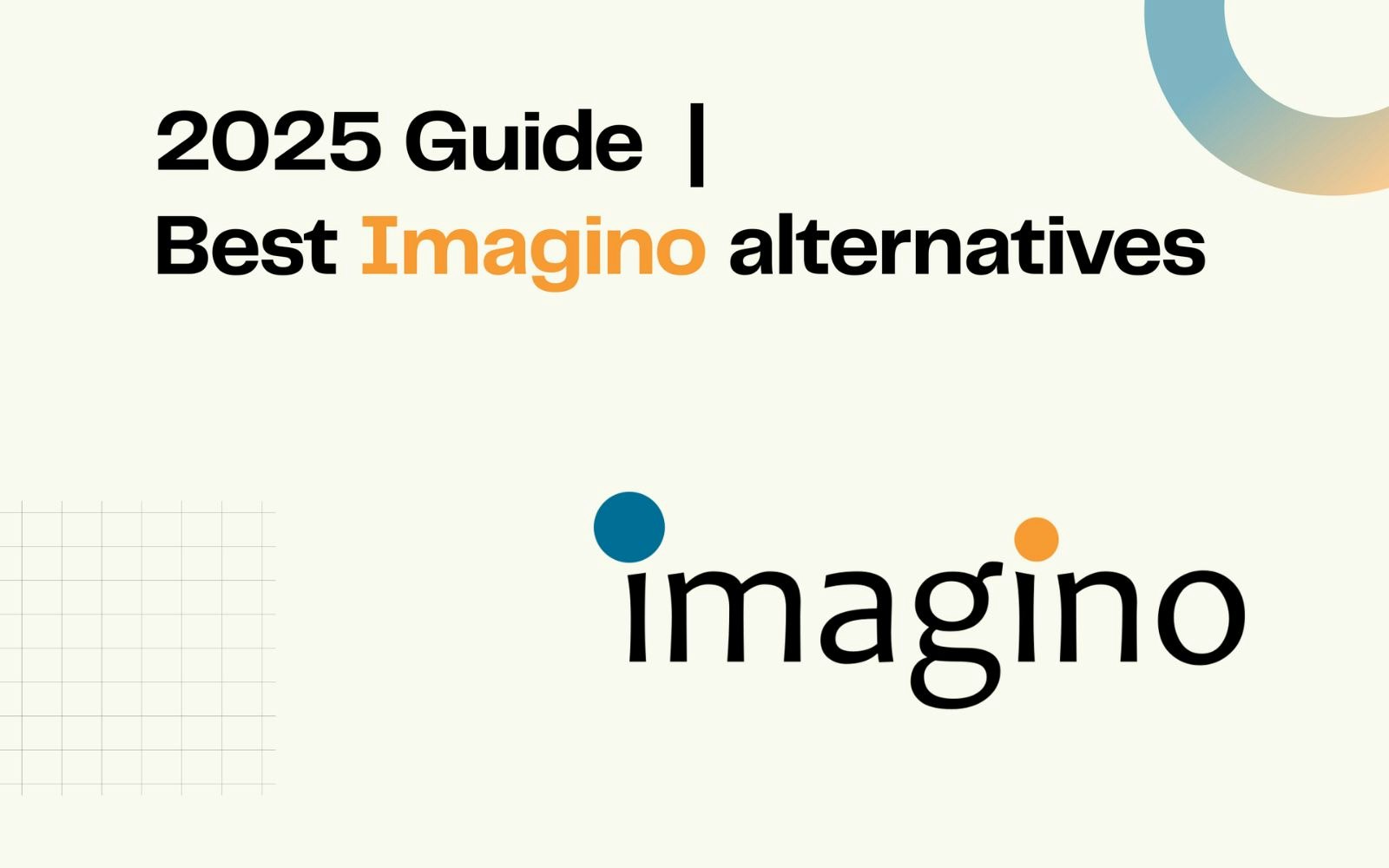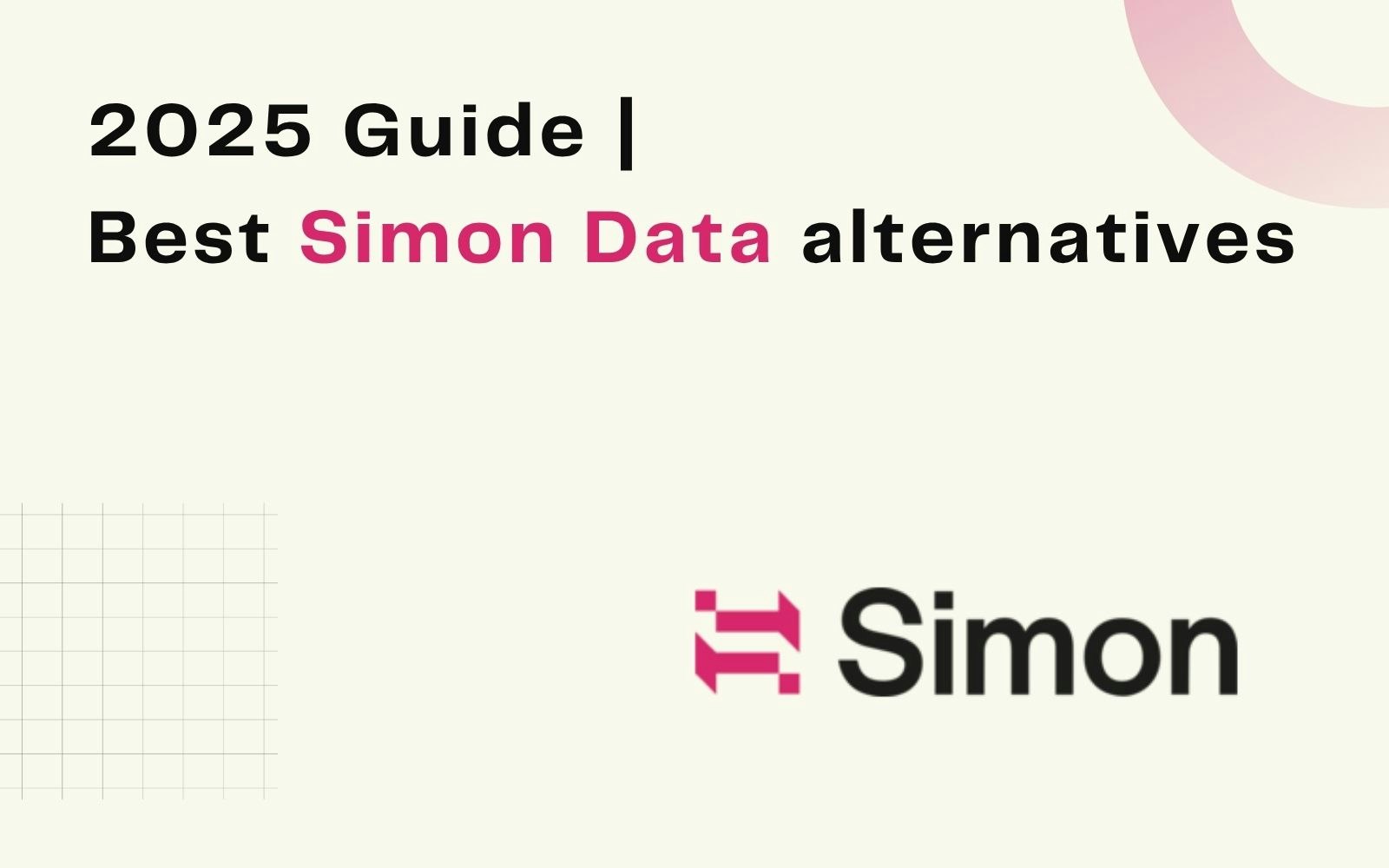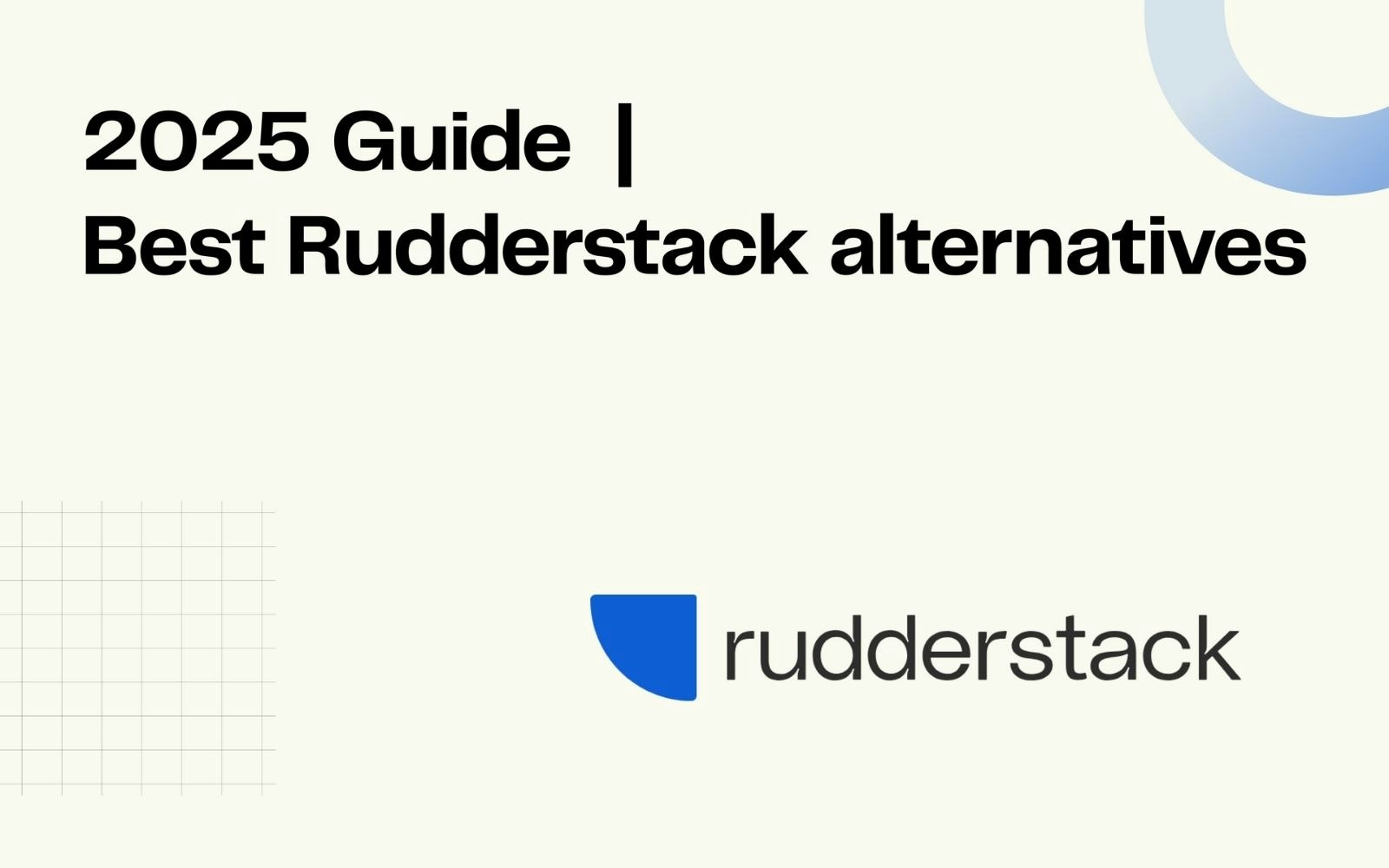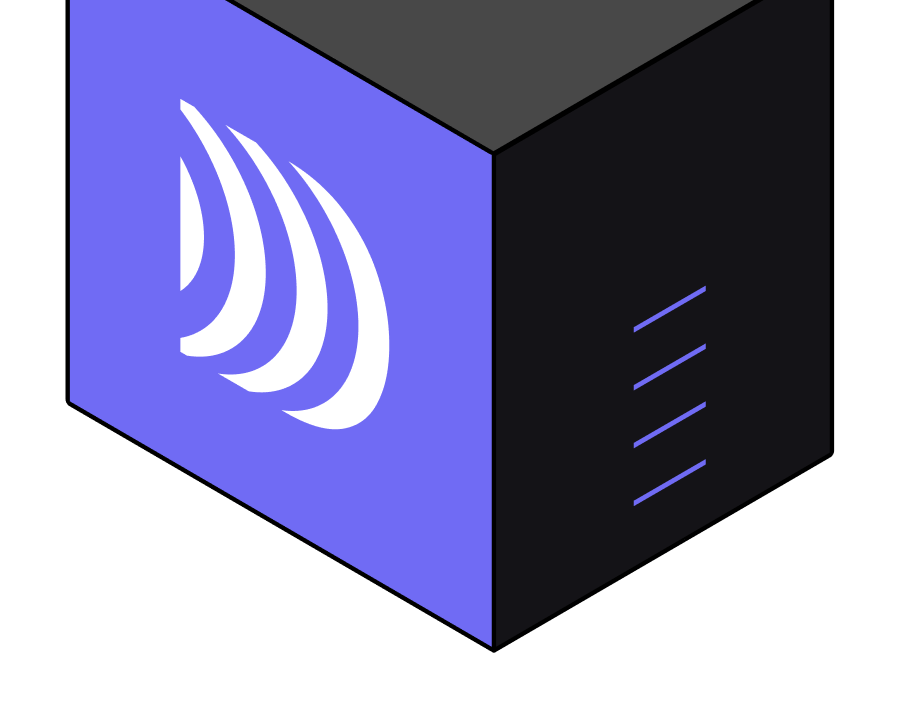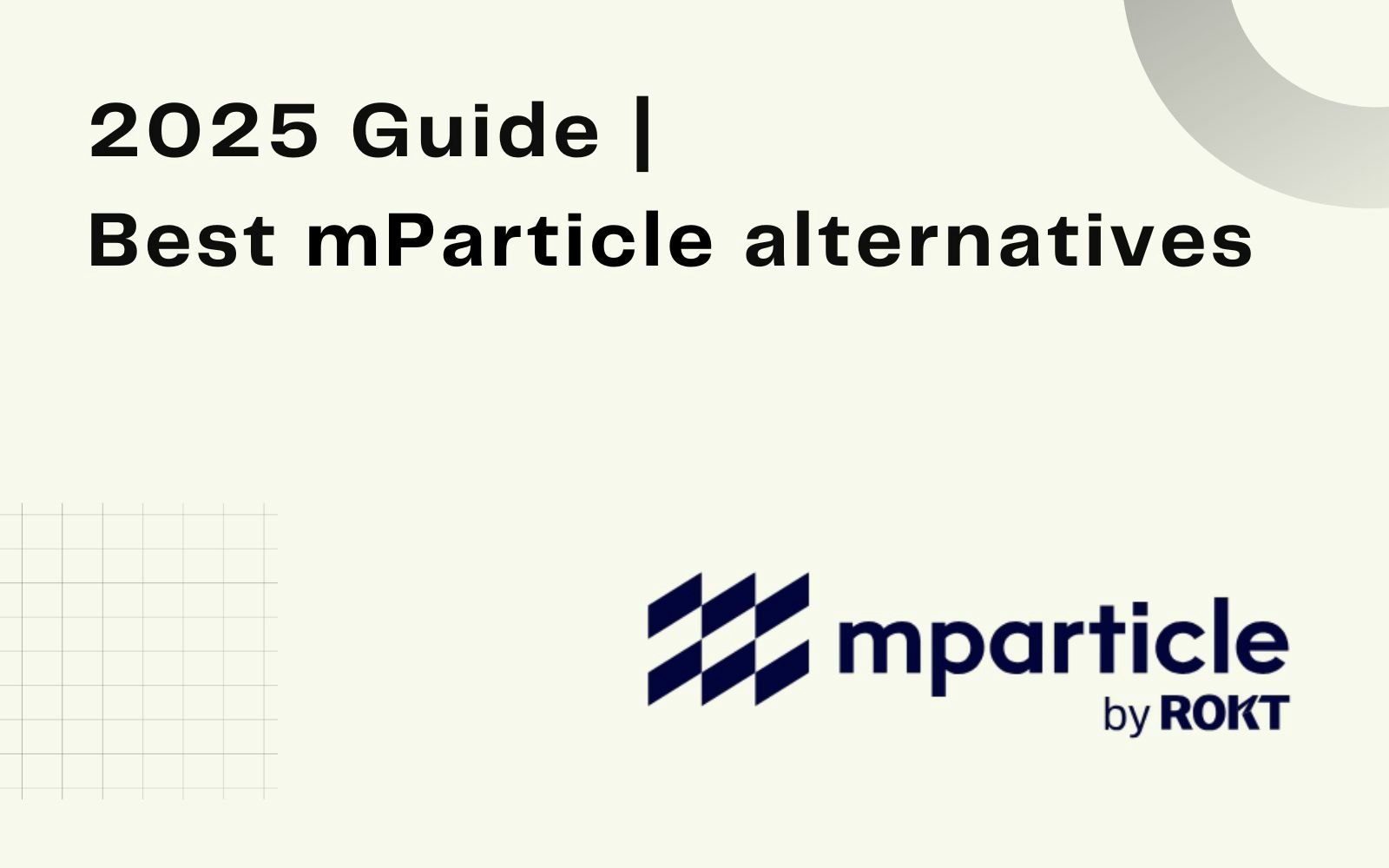
Best alternatives to mParticle
7min • Last updated on Jul 18, 2025

Olivier Renard
Content & SEO Manager
Last January, Rokt acquired mParticle for $300 million. This strategic move between an e-commerce technology specialist and a Customer Data Platform (CDP) provider is no coincidence. It aims to better address the needs of businesses when it comes to customer data management.
The ability to centralise information, gain a unified customer view, and activate that data has become a strategic asset. Rokt is now looking to bring all of these capabilities into its ecosystem.
Key Takeaways:
mParticle is a Customer Data Platform founded in 2013. It is widely used across sectors such as e-commerce, mobile applications, and media.
The platform offers real-time data collection, unified profile management, analytics, and connectors to marketing activation tools.
mParticle is built on a traditional CDP architecture. Since its acquisition in January 2025, it has been expanding its capabilities toward data warehouse integration.
Choosing an alternative depends on the expected level of customisation, your existing data infrastructure, and how much autonomy marketing teams require.
👉 Explore our selection of the best alternatives to mParticle. Compare their strengths, limitations, and the main criteria to help you identify the CDP best suited to your organisation. 🎯
mParticle: a legacy player in the CDP landscape
History and positioning
Founded in New York in 2013 by Michael Katz, Andrew Katz, Dace Myers, and Jason Lynn, mParticle is one of the original players in the Customer Data Platform space. The company started out in mobile tracking, before positioning itself as a credible alternative to Segment, which had launched two years earlier.
Strongly focused on data flow reliability and security, mParticle has won over major North American B2C brands in sectors such as finance, retail, travel, and food services (including Marks & Spencer, Burger King, JetBlue, SoFi, and HBO Max).
The platform offers a suite of features covering data collection, data quality controls, a flexible audience builder, and omnichannel activation capabilities. It is built on a traditional architecture, with proprietary data storage and internal profile management.
More recently, mParticle has begun shifting towards a more modular approach. This repositioning mirrors the industry’s move toward architectures centred around cloud data warehouses.
Key features
1️⃣ Data collection and unification
From the start, mParticle has made it easy to collect customer data in real time from a variety of sources, including websites, mobile apps (iOS, Android), and backend servers. The platform supports this via client-side SDKs and server-side APIs.

Real-time event collection
The data may include behavioural signals (clicks, purchases, views) or identity-related information. Once collected, it is centralised within the platform and linked to a unified profile using IDSync, mParticle’s identity resolution engine.
For companies using Snowflake, the ComposeID feature enables this unification process to happen directly within the data warehouse, following a hybrid model. The goal is to build a consistent and usable 360° customer view that is accessible to both marketing and data teams.
2️⃣ Segmentation and omnichannel activation
mParticle offers a no-code audience builder that allows users to easily create audience segments based on various criteria, whether behavioural or predictive. Segmentation can rely on dynamic conditions such as purchase frequency, inactivity, or navigation on specific channels.
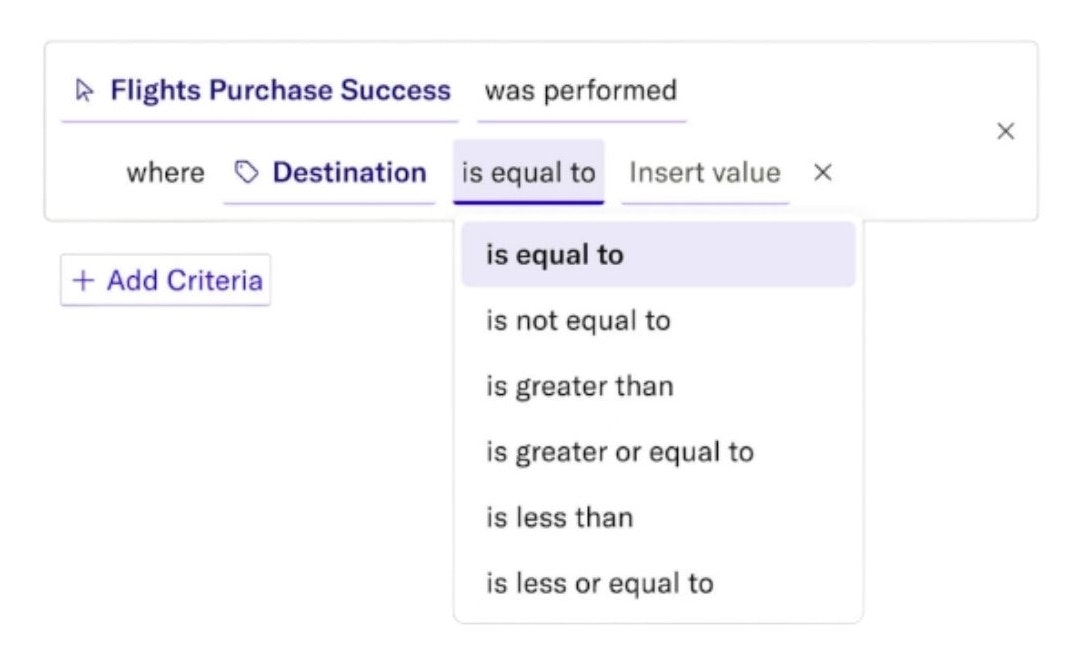
Segmentation criteria
Once defined, these audiences can be activated across business tools including email platforms, advertising networks, CRM systems, analytics tools, and more. The US-based provider currently claims support for around 300 integrations.
As with other CDPs on the market, this enables marketing teams to personalise campaigns and automate actions to enhance the customer experience. Teams maintain a high level of autonomy, while relying on accurate, up-to-date data.
3️⃣ Insights and data governance
mParticle offers a range of features to help businesses leverage customer data while ensuring both quality and compliance:
Analytics module: With Indicative, the platform enables analysis of user journeys, identification of friction points, and measurement of marketing campaign performance.
AI features (Cortex): mParticle integrates artificial intelligence capabilities to enrich data, generate predictive scores (such as likelihood to purchase or churn risk), and deliver recommendations.
Governance and data quality: Validation rules, automated controls, and orchestration features help ensure the reliability of customer data.
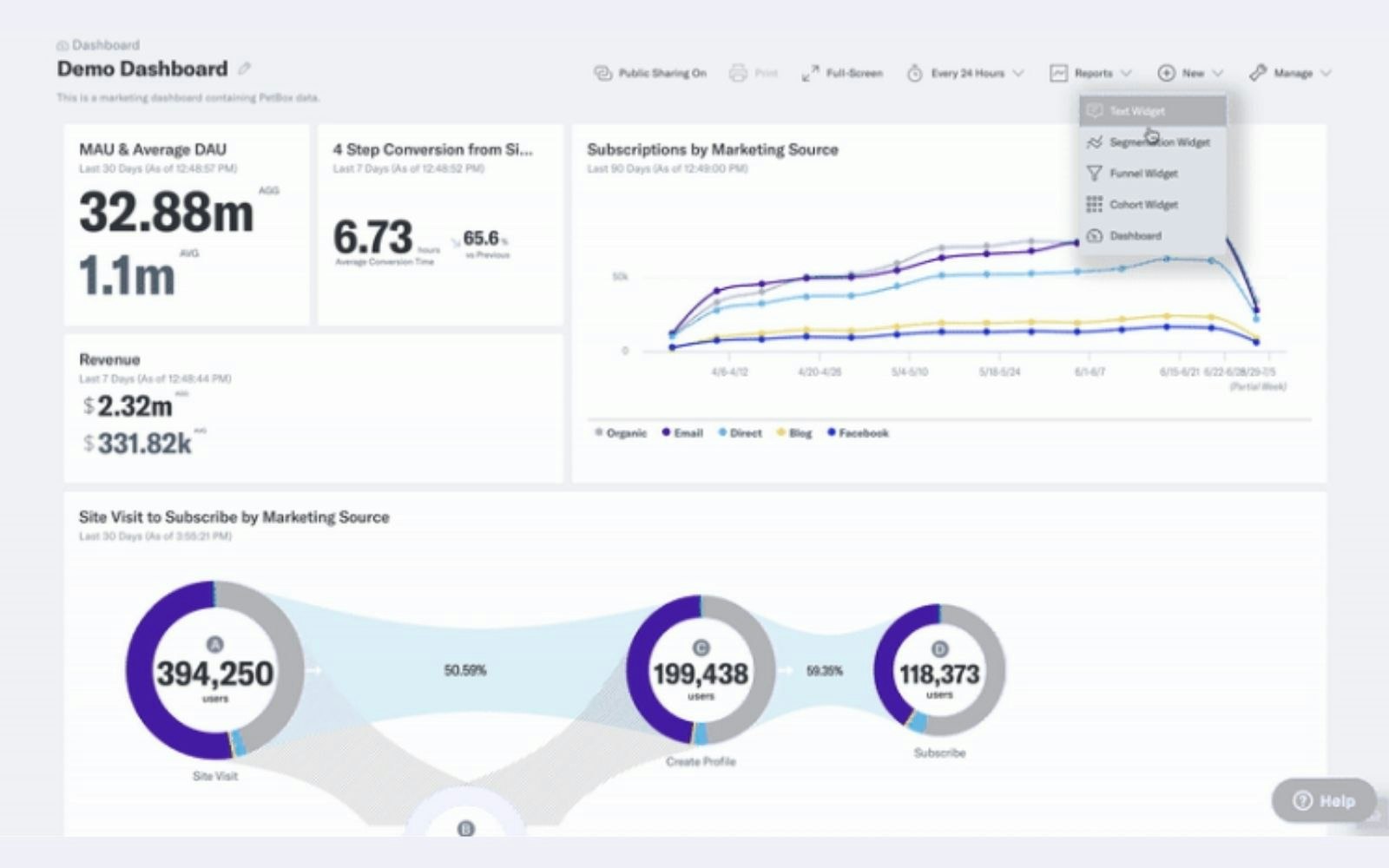
mParticle dashboards
Strengths and limitations
Pros
Comprehensive coverage of CDP use cases: mParticle supports behavioural data collection from websites, mobile apps, and servers. This data is centralised and can be activated across a wide range of destinations through native connectors.
Interface designed for marketing teams: The no-code segmentation module makes it easy to build personalised audiences without requiring technical expertise.
Cortex AI Engine: The platform’s integrated AI module supports predictive analysis, improves decision-making, and helps target specific audiences for activation.
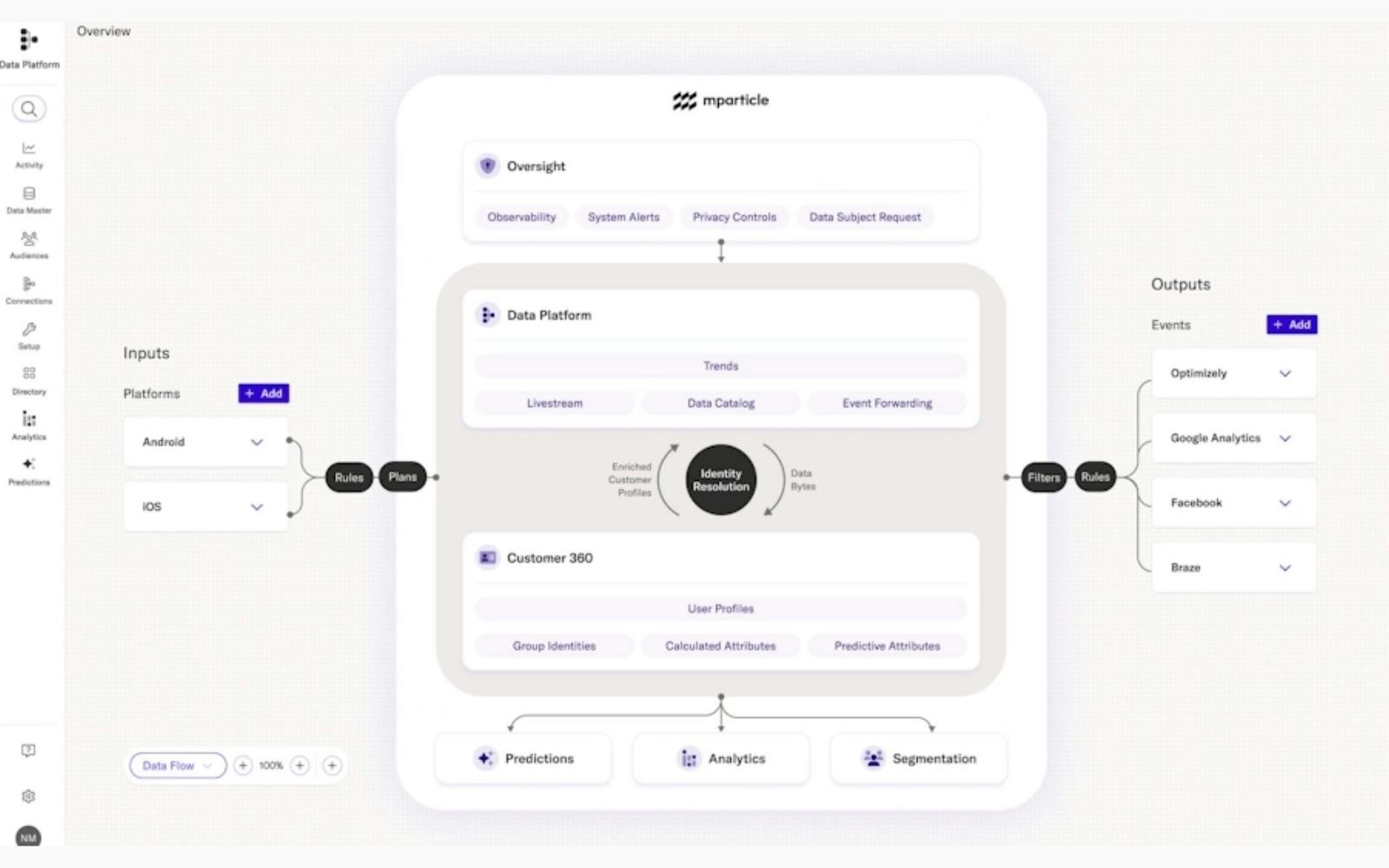
mParticle global overview
Limitations
Relies on a traditional architecture: Data is stored within mParticle’s own environment, which may limit organisations that have already adopted a modern data stack.
Rigid data model: The system is primarily structured around events and user profiles. To work with richer datasets, businesses must set up a specific sync process with their data warehouse.
Some key features are only available as premium options. For companies handling large data volumes or seasonal activity spikes, this makes it harder to assess the overall cost especially since the APIs are limited.
Initial implementation can be lengthy: The onboarding process may involve multiple technical steps to integrate data flows and ensure compliance with regulations (such as GDPR or CCPA).
What are the alternatives to mParticle?
Composable CDPs: A modern, modular alternative
Composable Customer Data Platforms integrate directly with a company’s existing data infrastructure. Unlike traditional CDPs such as mParticle, they do not store data within their own environment.
Instead, they work with the data where it already lives: in your data warehouse. This zero-copy approach is particularly well suited to organisations equipped with a modern data stack.
With controlled costs, modularity, and strong data governance and security, composable CDPs offer a modern alternative that’s fast to implement. Their flexibility gives business teams access to reliable, up-to-date data without having to rely on technical teams.
Main vendors:
DinMo is a composable CDP designed to bring marketing and data teams closer together. It connects natively to the organisation’s data warehouse, which acts as the single source of truth. Data is not duplicated in the CDP’s proprietary system, which helps simplify governance and compliance.
Its no-code Audience Builder lets teams create segments and personalise customer journeys autonomously. Through its Customer Hub, DinMo offers advanced AI capabilities to identify signals, segment audiences, and optimise omnichannel campaign performance.
DinMo stands out for its intuitive interface and ROI-driven approach to CDP adoption: your first use cases can be implemented in just a few minutes!
Hightouch: Initially focused on Reverse ETL, Hightouch has gradually expanded its offering to support marketing teams within a composable architecture. It provides a Customer Studio connected to the data warehouse, enabling audience creation and campaign orchestration. However, its predictive AI capabilities are still somewhat limited.
Census: Now part of Fivetran, Census also uses a modular architecture. The platform covers the key features of a CDP: identity resolution, segmentation, and activation. It is well regarded by technical teams for its data transformation functionalities.
👇
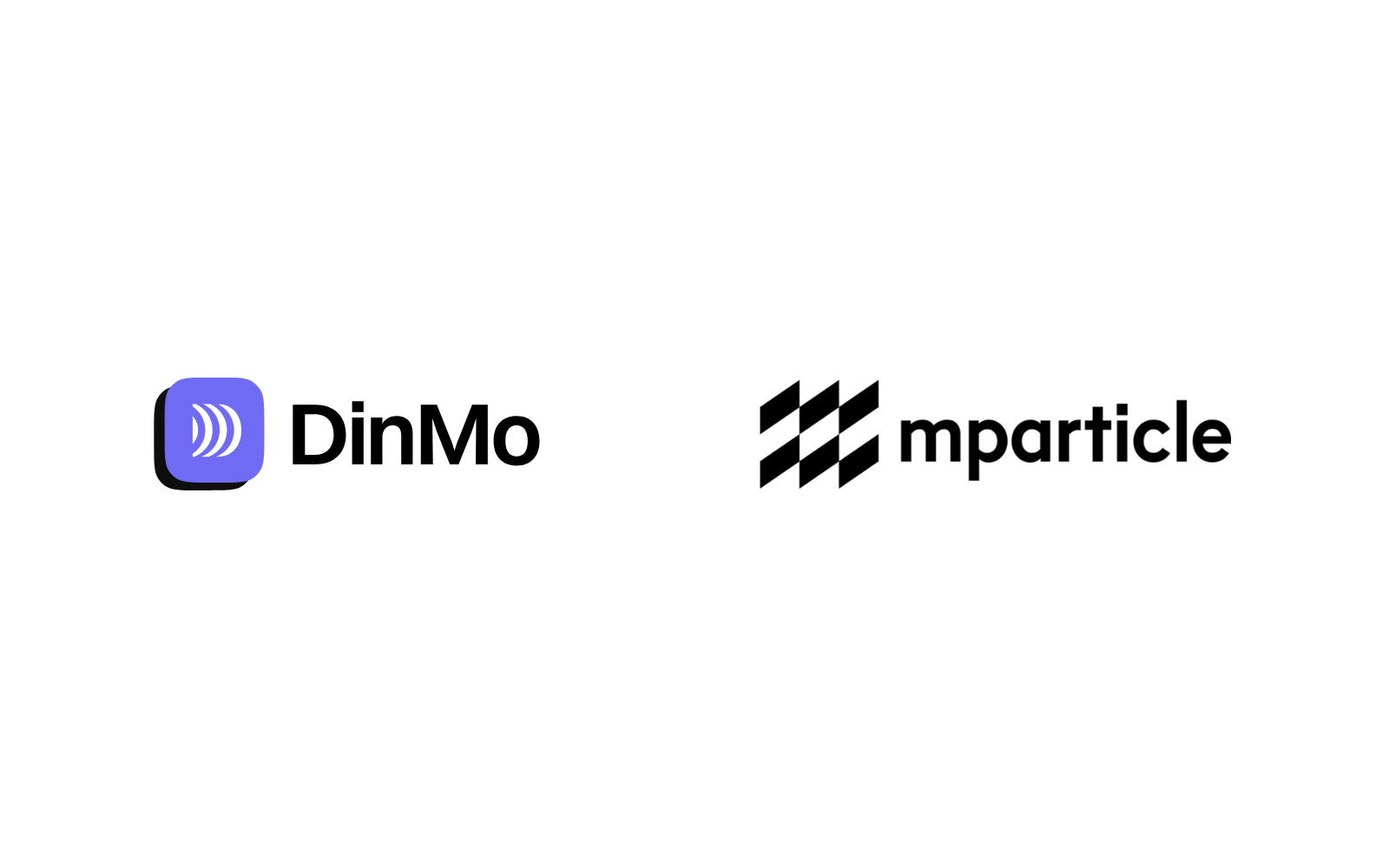
Key differences between mParticle and DinMo
Other Packaged CDPs
These platforms share the same architecture as mParticle: they store data within their own environment. This duplication results in the creation of two sources of truth, and their cost is often higher than that of composable CDPs.
Segment Twilio
A long-standing player in the CDP market, Segment offers an extensive library of connectors but remains relatively inflexible in terms of its data model.
Amperity
Specialised in identity resolution, Amperity is widely used in sectors like retail and travel to build a unified customer view. Compared to other CDPs, its interface is less intuitive for marketing teams.
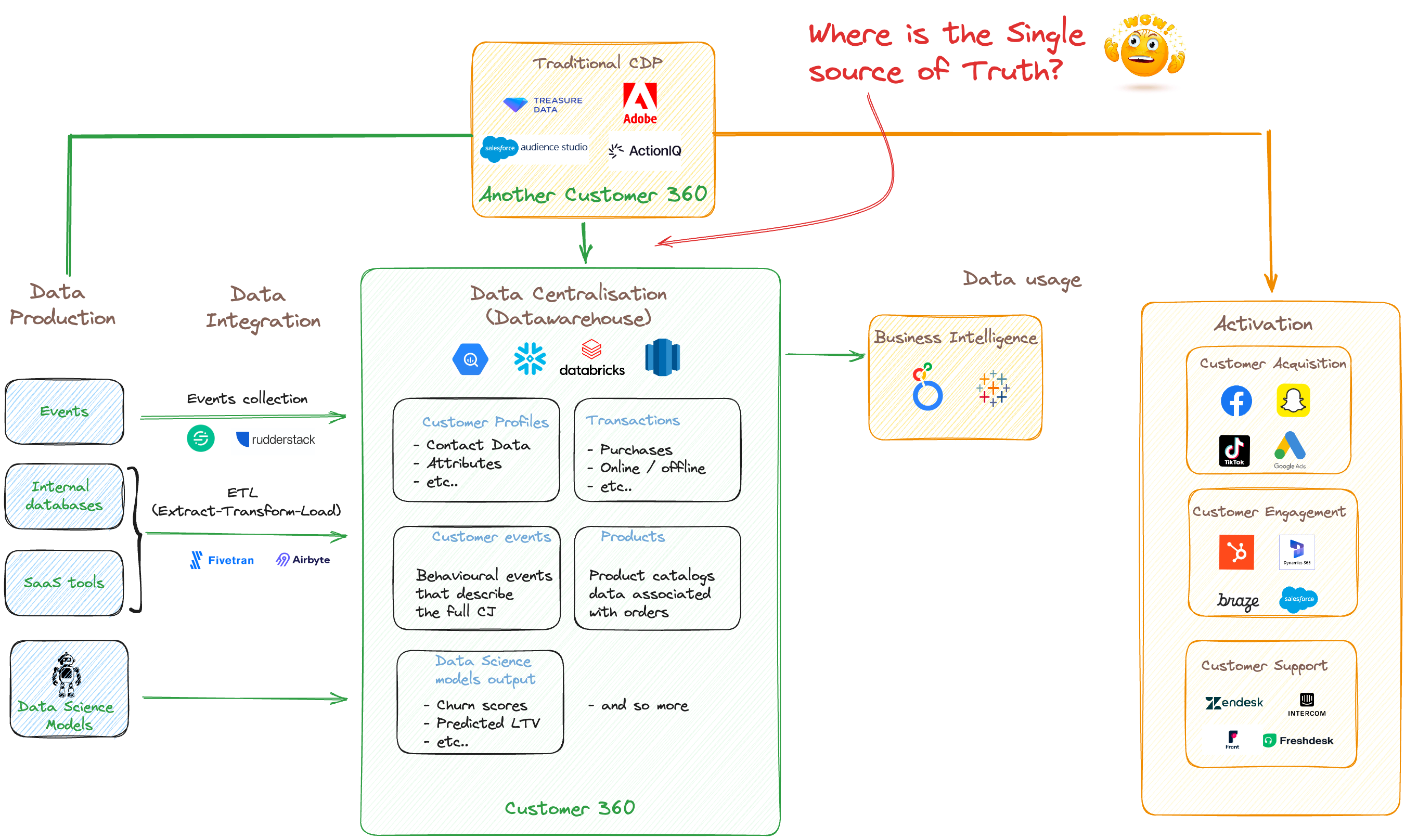
Traditional CDPs duplicate data, negating the concept of "Single Source of Truth"
Hybrid CDPs
These solutions retain a traditional architecture, while also expanding their capabilities around specific data warehouses, such as Snowflake.
Imagino
This French platform offers identity resolution and segmentation features within its CDP layer, along with orchestration features through its Campaign module.
Simon Data
Simon Data enables businesses to leverage data stored in Snowflake via its Activate module, but it still relies on a proprietary foundation. Implementation can be complex, and costs are relatively high.
ActionIQ has also adopted this hybrid model to address the growing demand for modern data infrastructures.
Infrastructure CDPs
These solutions primarily focus on the technical components of a CDP such as event tracking, data transformation, and connectors. Their interfaces are typically designed with IT teams in mind.
Rudderstack
An open-source CDP built for developers, Rudderstack allows full control over data flows through customisable pipelines.
Treasure Data
Targeting large enterprises, Treasure Data has been a Big Data specialist since its founding in 2011. It offers workflows to activate customer data at scale.
Marketing cloud suites with CDP modules
Major marketing cloud providers are gradually enhancing their platforms with integrated CDP modules to support omnichannel personalisation.
Salesforce
Salesforce Data Cloud connects data from across the Salesforce ecosystem to power CRM and advertising use cases.
Adobe
Adobe Real-Time CDP is designed for digitally mature brands, offering deep integration with the broader Adobe Experience Cloud ecosystem.
Conclusion: Which solution should you choose based on your priorities?
mParticle remains a well-established platform and can be a strong option for mobile-focused companies with specific needs around behavioural data collection. However, its traditional architecture may present limitations in the face of new challenges for data and marketing teams.
Today, composable solutions are a compelling alternative, offering several key advantages:
Native integration with your data warehouse, enabling a composable and scalable CDP,
Fast time-to-value thanks to a no-code interface and omnichannel activation,
A pricing model aligned with your stack and business needs, with no hidden fees.
👉 Try DinMo and discover how to activate your customer data, without the complexity.

















